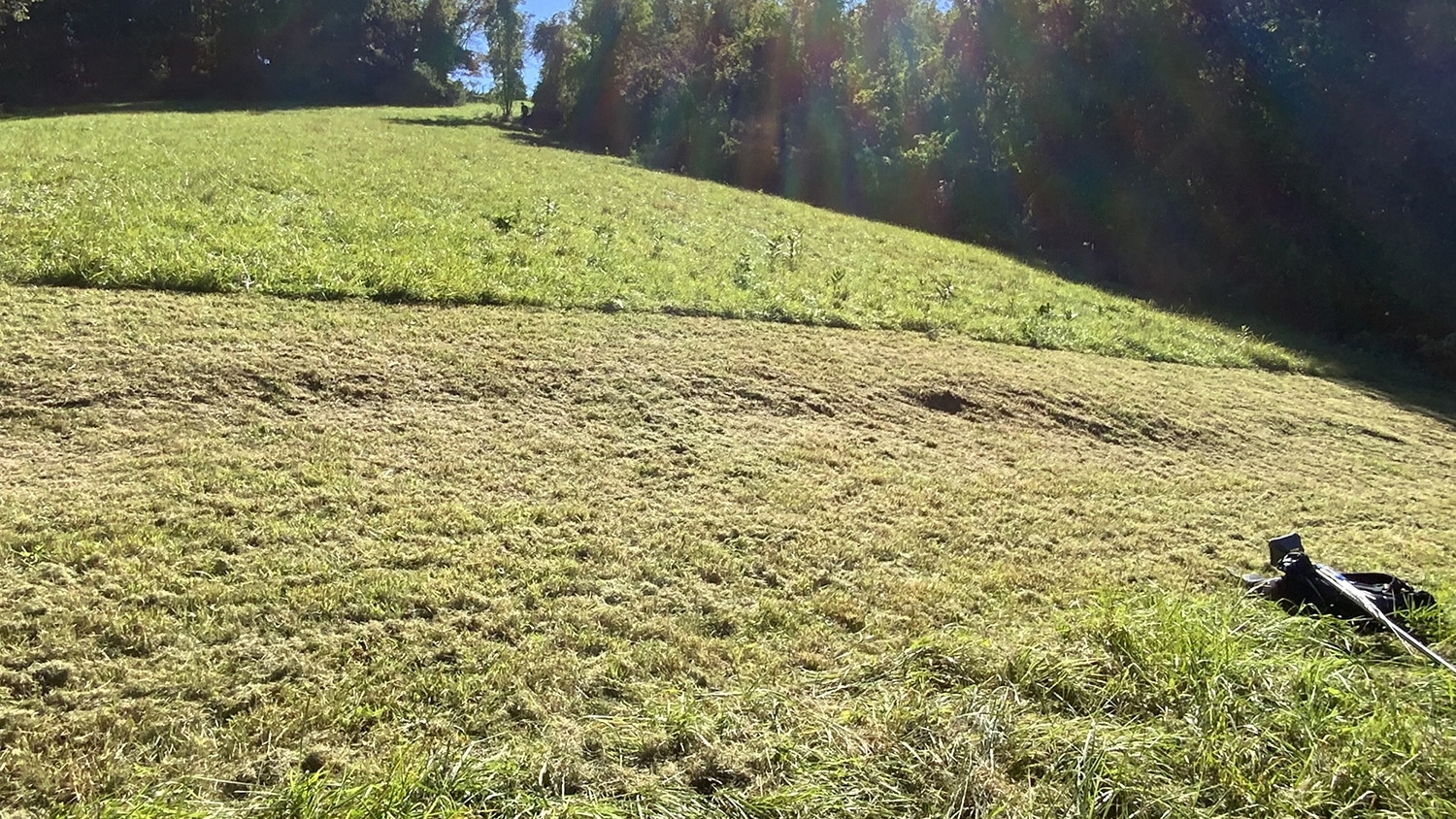On Aug. 9, 2020, at 8:07 a.m., the earth shook in Sparta, N.C. On its own, that isn’t such a rare event – North Carolina does have earthquakes, most frequently near the Appalachian mountain range. But this earthquake was unique in a different way: it was a shallow earthquake that caused a ground surface rupture on a previously unknown fault line. In fact, the Sparta earthquake is the first documented surface rupture earthquake in the eastern U.S.
Why is this a big deal? There are a few reasons. First, it’s very rare that a moderate magnitude earthquake (the Sparta quake was a 5.1) will create a rupture at the surface. Most earthquakes are generated along fault planes located deep within the Earth (commonly five to seven miles below the surface), and a moderate earthquake that deep does not have enough energy to break the fault all the way to the surface.
But this earthquake was a shallow one, with a hypocenter, or depth, approximately three quarters of a mile below the surface. This leads us to the second interesting thing about this earthquake: not only did it rupture the ground, it did so along a previously unknown fault line. That fault line, by the way, is now called the Little River fault.
So to sum up, the Sparta earthquake is interesting to geologists because: it shows that moderate shallow earthquakes can break the ground surface; they may be more common than previously thought; and they can happen even in faults that are not well-known.
When we think about faults, the ones we’re most likely to picture are the ones caused by plate tectonics within the Earth.
“But there are other discontinuities – faults – all around the world, that aren’t associated with active plate boundaries,” says Paula Marques Figueiredo, a post-doctoral research assistant at NC State and lead author of a recent study on the Sparta earthquake.
“These faults are structures inherited from plate tectonics that occurred many millions of years ago,” Figueiredo says. “Although the old plate boundaries are no longer active and no longer there, these fault structures can still move – they’re like scars left over from plate tectonics. They produce earthquakes less frequently and may have weaker seismicity.
“Because earthquakes are less frequent in these faults than the ones in active plate boundaries, this type of seismicity is less understood.”
This is another part of what made the Sparta quake so exciting for geologists.
“We think that these less active faults – that are outside active plate boundaries and don’t ‘feel’ the plate tectonics forces as much – tend to move when there are pressure changes on the surface above them,” Figueiredo says. “These pressure changes can be due to things like sediment or water being added or released over time; for example, the weight of large glaciers and their removal or large rivers depositing and removing tons of sediments. But these characteristics don’t apply in the Sparta region, which means that there may be something else at play that we don’t fully understand yet.”
When the research team studied the quake further, they found evidence of earlier earthquakes in that fault, though they are still working on determining how long ago these quakes may have occurred.
“It seems strange to say an earthquake can be subtle, but the evidence in the geology and landscape here certainly is,” Figueiredo says. “There is so much here left to understand – we don’t even know when the fault line formed – but hopefully this earthquake can tell us more about these shallow quakes not only in North Carolina, but all over the world.”
The study, “The Mw 5.1, 9 August 2020, Sparta Earthquake, North Carolina: The First Documented Seismic Surface Rupture in the Eastern United States,” was recently published in GSA Today. NC State co-authors are Del Bohnenstiehl, Karl Wegmann, Lewis Owen and Corey Scheip.
This post was originally published in NC State News.



